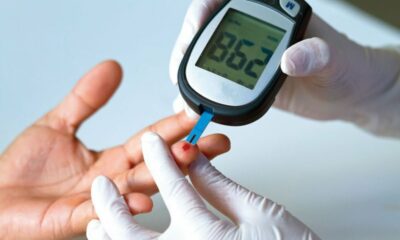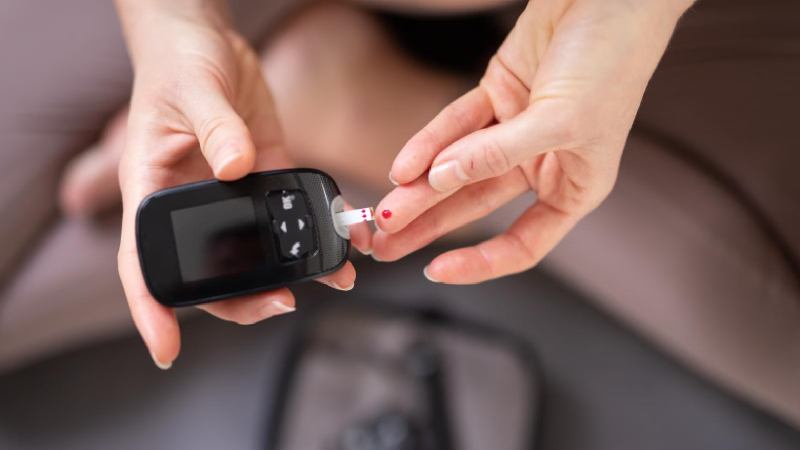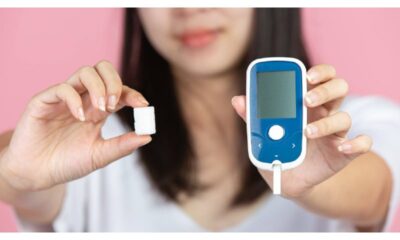Living with type 2 diabetes requires constant monitoring of blood sugar levels. A blood sugar monitor becomes your trusted companion, helping you make informed decisions about diet, exercise, and medication. With a vast array of options available, choosing the right monitor can feel overwhelming. This comprehensive guide explores the top 10 blood sugar monitors for type 2 diabetes, considering factors crucial for effective management.
Understanding Blood Sugar Monitoring for Type 2 Diabetes
Blood sugar, also known as glucose, is the primary energy source for your body’s cells. In type 2 diabetes, the body either struggles to produce enough insulin (a hormone regulating blood sugar) or becomes resistant to its effects. This leads to high blood sugar levels, which can damage organs and tissues over time.
Regular blood sugar monitoring empowers you to:
- Identify trends: Track how your blood sugar responds to food, exercise, and medications.
- Make informed choices: Adapt your diet and physical activity based on real-time blood sugar readings.
- Prevent complications: Early detection of blood sugar spikes and dips allows for timely intervention to prevent long-term health issues.
- Optimize medication: Monitor how medications affect your blood sugar levels and work with your doctor to adjust dosages if necessary.
Choosing the Right Blood Sugar Monitor
Several factors influence which blood sugar monitor best suits your needs. Here’s a breakdown of key considerations:
- Ease of Use: Look for a user-friendly design with clear instructions and large displays for easy reading. Consider features like single-button operation, pre-filled lancing devices, and voice guidance for visually impaired users.
- Accuracy: Consistent and reliable readings are paramount. Look for monitors with FDA approval and high user ratings for accuracy.
- Pain Management: For those sensitive to finger pricking, consider monitors with alternative testing sites or continuous glucose monitoring (CGM) systems.
- Cost: Monitor prices and test strip costs can vary significantly. Factor in insurance coverage and affordability when making your choice.
- Connectivity: Many monitors offer Bluetooth connectivity to smartphones or computers, allowing data tracking and sharing with healthcare providers.
- Additional Features: Some monitors boast features like blood ketone testing, bolus calculators for insulin pump users, and reminders for testing. Choose features that enhance your diabetes management plan.
Top 10 Blood Sugar Monitors for Type 2 Diabetes
Now, let’s delve into the top 10 blood sugar monitors for type 2 diabetes, highlighting their strengths and considerations:
- 1. Contour Next One Blood Glucose Monitoring System: This user-friendly option boasts a fast 5-second reading time and second-chance sampling for insufficient blood application. It’s ideal for beginners with its simple design and large display.
- Strengths: Easy to use, accurate, affordable, second-chance sampling.
- Considerations: No Bluetooth connectivity, basic features.
- 2. FreeStyle Libre 2: This CGM system features a sensor inserted under the skin that transmits glucose data wirelessly to a reader or smartphone app for continuous monitoring. It eliminates finger pricking for most checks.
- Strengths: Continuous glucose monitoring, pain-free, long sensor wear time (14 days), alarms for high and low blood sugar.
- Considerations: Sensor insertion requires healthcare professional assistance, higher upfront cost compared to traditional meters.
- 3. Dexcom G6 CGM System: Another popular CGM option, the Dexcom G6 offers continuous glucose monitoring with readings displayed on a receiver or smartphone app. It features a comfortable sensor worn for 10 days and minimal calibration requirements.
- Strengths: Continuous glucose monitoring, pain-free, accurate, easy to use, minimal calibration.
- Considerations: Sensor insertion requires healthcare professional assistance, higher cost compared to traditional meters.
- 4. Verio Flex Blood Glucose Monitoring System: This meter offers a compact design with a large, easy-to-read display. It boasts Bluetooth connectivity for data transfer to a smartphone app and integrates with some insulin pumps.
- Strengths: User-friendly, compact design, Bluetooth connectivity, some pump integration.
- Considerations: Average accuracy compared to some competitors, basic features.
- 5. Accu-Chek Guide Meter: This reliable meter provides accurate readings with a small blood sample requirement. It offers voice guidance for visually impaired users and features a brightly lit display for easy viewing in all light conditions.
- Strengths: Accurate, small blood sample size, voice guidance, bright display.
- Considerations: No Bluetooth connectivity, basic features.
- 6. OneTouch Verio Reflect Blood Glucose Monitoring System:
- along with fingertip testing. It boasts Bluetooth connectivity and integrates with the OneTouch Reveal app for data tracking and analysis.
- Strengths: Easy to use, alternative site testing, Bluetooth connectivity, data tracking app integration.
- Considerations: Average accuracy compared to some top contenders, higher test strip costs.
- 7. Senseonics Eversense CGM System: This implantable CGM system offers long-term continuous glucose monitoring (up to 90 days) with a sensor inserted under the skin by a healthcare professional. It transmits data wirelessly to a transmitter and mobile app.
- Strengths: Long-term continuous monitoring, eliminates most finger pricking, minimal calibration needed.
- Considerations: Requires implantation procedure by a healthcare professional, may not be suitable for everyone due to insertion site considerations, higher upfront cost.
- 8. Guardian Connect by Medtronic: This CGM system features a sensor worn on the arm that transmits glucose data to a transmitter and mobile app. It offers customizable alerts and provides data on “time in range,” indicating how long your blood sugar stays within your target zone.
- Strengths: Continuous glucose monitoring, customizable alerts, time in range data, Bluetooth connectivity.
- Considerations: Sensor insertion required, not approved for children under 14, higher cost compared to traditional meters.
- 9. Trividia Biosensor CGM System: This patch-based CGM system is a potential future option. It uses a small, disposable patch worn on the arm for continuous glucose monitoring. The patch transmits data to a mobile app, eliminating finger pricking and the need for sensor insertion.
- Strengths: Pain-free, patch-based design, no finger pricking or sensor insertion required (still under development).
- Considerations: Not yet commercially available (as of June 2024), limited information on accuracy and long-term wearability.
- 10. AgaMatrix Wave Diabetes Management System: This meter offers a sleek design with a large display and Bluetooth connectivity to a mobile app. It features voice guidance and accepts a small blood sample size.
- Strengths: User-friendly design, voice guidance, small blood sample size, Bluetooth connectivity.
- Considerations: Average accuracy compared to some top contenders, limited availability in certain regions.
Conclusion
Choosing the right blood sugar monitor is an essential step in effectively managing type 2 diabetes. By considering your individual needs, preferences, and budget, you can select a monitor that empowers you to take control of your health.
Remember, this guide provides a starting point. Always consult with your doctor or healthcare professional to discuss which blood sugar monitor best suits your specific situation and diabetes management plan.

 General Medicine2 weeks ago
General Medicine2 weeks ago
 Diabetology2 weeks ago
Diabetology2 weeks ago
 Diabetology2 weeks ago
Diabetology2 weeks ago
 General Medicine2 weeks ago
General Medicine2 weeks ago
 Diabetology6 days ago
Diabetology6 days ago
 Diabetology6 days ago
Diabetology6 days ago
 Diabetology4 days ago
Diabetology4 days ago
 Diabetology4 days ago
Diabetology4 days ago












